[ベスト] sinus rhythm with premature atrial contractions 336668-Sinus rhythm with premature atrial and ventricular contractions
Premature Atrial Contraction (PAC) It's premature atrial coming from the AS node!!!Sep 01, 07 · Normal sinus rhythm with premature atrial contractions (Answer and Discussion on next page) Figure 1 Figure 2 Figure 3 Answer Normal sinus rhythm with junctional escape beats What The ECG Shows The ECG shows an irregularly irregular rhythm that is slightly bradycardic but nearly normal in rate (Figure 1) There appear to be P waves25 ECG ECG reveals sinus rhythm with variation in PP interval preceding the change in RR intervals without any significant ch ange in PR interval (Figure 1) 26 Management No workup is needed because sinus arrhythmia is a normal variant with excellent prognosis 3 Ectopic complexes (premature beats) 31 Premature atrial contractions
1
Sinus rhythm with premature atrial and ventricular contractions
Sinus rhythm with premature atrial and ventricular contractions-A premature atrial contraction differs from a premature junctional contraction in that the PR interval is > 012 second in a premature atrial contraction The PR interval may be shorter than that in normal sinus rhythm if it is located closer to the AV nodeAug 01, · However, if an ectopic focus depolarises early enough — before the arrival of the next sinus impulse — it may "capture" the ventricles, producing a premature contraction Premature contractions ("ectopics") are classified by their origin — atrial (PACs), junctional (PJCs) or ventricular (PVCs)




Premature Atrial Contraction An Overview Sciencedirect Topics
Jul 05, 12 · Atrial Premature Complexes Medically reviewed by Debra Sullivan, PhD, MSN, RN, CNE, COI APCs result in a feeling that the heart has skipped a beat orNov 02, 19 · When your heart beats, your heart's natural pacemaker, the sinoatrial node, sends an electrical signal firing across the heart muscle A premature beat occurs when one section of the heart depolarizes slightly before the rest This is called a premature contraction, and it can either be atrial or ventricular, depending on the locationWe searched for nutrient deficiencies that could cause cardiac arrhythmias premature atrial contractions (PACs), premature ventricular contractions (PVCs), atrial fibrillation, and related sinus pauses, and found literature support for deficiencies of taurine and l
Usually, premature atrial contractions have no clear cause and no health risks In most cases, premature atrial contractions aren't a sign of heart disease and just happen naturally But someFigure 3 Premature ventricular contractions in bigeminy Two consecutive premature ventricular contractions are referred to as a pair or couplet If 3 to 30 premature ventricular contractions occur consecutively, it is referred to as nonsustained ventricular tachycardia (if the rate is >100 beats/min) or ventricular rhythm (if the rate isDec 03, · Premature atrial contractions (PACs) are contractions of the atria that are triggered by the atrial myocardium but have not originated from the sinoatrial node (SA node) PACs are also commonly referred to as atrial premature complexes (APCs), premature supraventricular complexes, premature supraventricular beat, and premature atrial beat
Nov 27, 17 · Neonatal arrhythmias are classified as either benign or nonbenign Benign arrhythmias include sinus arrhythmia, premature atrial contraction, premature ventricular contraction, and junctional rhythm;1 Additional Examples of Atrial Couplets (6) 2 Aberrated Atrial Couplets Figure 3 Record 1 2 3 Figure 4 Record 213 2 3 3 Aberrated Atrial Couplets with Right and Left Bundle Branch Blocks Figure 4 Record 213 2 3Oct 16, 12 · Premature atrial contractions (PACs), also known as atrial premature complexes (APC) or atrial premature beats (APB), are a common cardiac arrhythmia characterized by premature heartbeats originating in the atria While the sinoatrial node typically regulates the heartbeat during normal sinus rhythm, PACs occur when another region of the atria




Ectopic Beats Palpitations The Student Physiologist




Premature Atrial Contraction Premature Atrial Beat Complex Ecg Clinical Implications Ecg Echo
With this "extra" beat, a pause usually causes your next normal heartbeat to be more forceful Premature beats that start in your heart's upper chambers are premature atrial contractions, or PACs Those that start in the lower chambers are premature ventricular contractions, or PVCs Watch an animation of a normal heartbeatJul 01, 11 · Like ventricular premature contractions, atrial premature contractions are common, occur in patients with and without heart disease, and are not considered abnormal25 In patients without symptomsPeriod like premature atrial contraction's (PAC's) and premature ventricular beats (bigeminy) are usually transient and well tolerated Others like junctional ectopic tachycardia (J ET) a nd atrial flutter may cause significant hemodynamic instability




Ekg Strips Flashcards Quizlet




Ccu Non Conducted Premature Atrial Contractions Facebook
Premature atrial contractions, also known as atrial premature complexes or atrial premature beats, are a common cardiac dysrhythmia characterized by premature heartbeats originating in the atria While the sinoatrial node typically regulates the heartbeat during normal sinus rhythm, PACs occur when another region of the atria depolarizes before the sinoatrial node and thus triggers aFeb 09, 19 · Premature Atrial Contractions (PACs) Premature Atrial Contractions (PACs) are amongst the most common forms of arrhythmias It is due to the premature discharge of an electrical impulse in the atrium, causing a premature contraction Therefore, it is named "premature atrial contraction," or PACAtrial premature contraction P wave shape different than sinus p wave and in different rhythm than sinus Ectopic atrial rhythm P wave different shape than normal sinus rhythm Negative p wave in lead II Atrial flutter F waves at 300bpm QRS at 150,100,75 Usually regular "Saw tooth"




Premature Atrial Contraction Electrocardiogram Wikidoc




Premature Atrial Contractions Pacs And Atrial Fibrillation Afib Emory
Premature atrial contractions (PAC's) A PAC is a premature contraction coming from a piece of tissue in the atria A premature ventricular contraction (PVC) is a premature beat coming from somewhere in the ventricles A PAC results in an electrical impulse coming earlier than expected, and in most cases causes an extra contraction of the heartThese arrhythmias have noOct 19, 16 · The sinus node creates electrical impulses that travel across the atria to the ventricles, causing them to contract and pump blood out to your lungs and body in what is known as normal sinus rhythm In the case of PVCs, the heart doesn't actually skip a beat Instead, an extra beat comes sooner than normal
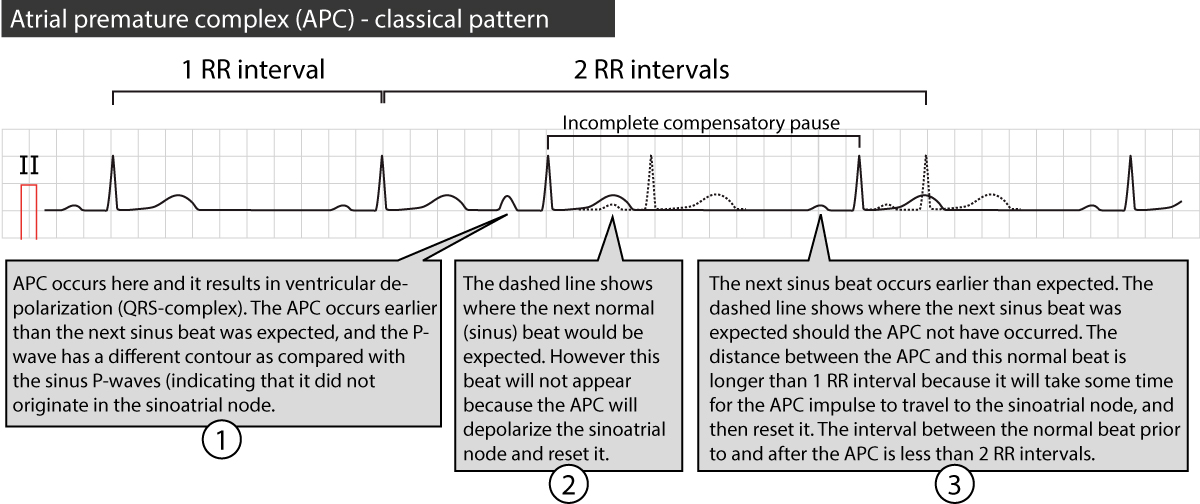



Premature Atrial Contraction Premature Atrial Beat Complex Ecg Clinical Implications Ecg Echo
/premature-atrial-complexes-pacs-1746248-6f0cff8230b24003aa23f8bd582b4ef7.png)



Premature Atrial Complexes Pacs Causes And Treatment
Premature atrial contractions Premature atrial contractions (PACs) originate from ectopic pacemakers located anywhere in the atrium other than the SA node (Fig 419) The ECG shows ectopic P waves that appear sooner than the next expected sinus beat The ectopic P wave has a different shape and/or direction to a normal P waveHence, the premature atrial contraction will occur between two sinus beats (1 RR interval between the sinus beats) and this is referred to as an interpolated premature atrial beat If every other beat is an atrial premature contraction, it is called atrial bigeminy ( Figure 6)May 06, · Supraventricular premature beats represent premature activation of the atria from a site other than the sinus node and can originate from the atria or the atrioventricular node (called junctional premature beats), though the vast majority are atrial in origin



Cardiovascular Pathophysiology 3 Pdf Free Download




A Representation Of Premature Atrial Contraction From The Rhythm Download Scientific Diagram
A premature atrial contraction (PAC) or atrial premature contraction is "a premature beat arising from an ectopic focus within the atria" 2 Premature contractions are classified by their origin atrial (PACs), junctional , or ventricularMultifocal (or multiform) atrial tachycardia (MAT) is an abnormal heart rhythm, specifically a type of supraventricular tachycardia, that is particularly common in older people and is associated with exacerbations of chronic obstructive pulmonary disease (COPD) Normally, the heart rate is controlled by a cluster of cells called the sinoatrial node (SA node)Feb 02, 21 · The initial diagnostic test would be a 12lead electrocardiogram to look for ectopic ventricular beats As PVCs are infrequent in most patients, the brief period of an electrocardiogram may fail to capture the ectopic beats This also allows the differentiation of a PVC from ectopic atrial beats, which are termed premature atrial contractions
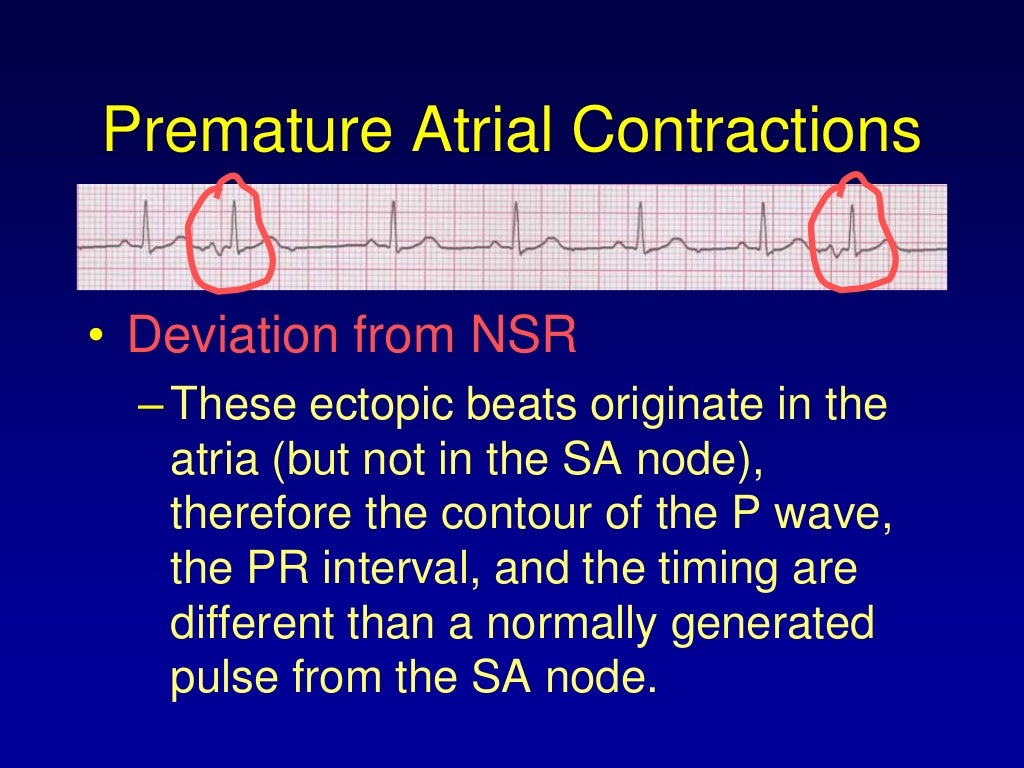



Ekg Module 4a




Random Practice Rhythms
Jun 01, 21 · PACs are early (that is, premature) electrical impulses that are generated within the cardiac atria, but not from the sinus node PACs momentarily interrupt the normal sinus rhythm by inserting an extra heartbeat Because a PAC can reset the sinus node, there is usually a short pause before the next normal heartbeat occursIsolated premature atrial contractions (PACs) are relatively common in infants and small children On the ECG the early P waves exhibit a morphology and axis that differ from those in normal sinus rhythm Premature atrial contractions may be conducted to the ventricles normally, blocked at the AV node, or conduct aberrantly (abnormal QRSMost individuals experience premature atrial contractions on occasion, however, excessive premature atrial contractions can become a lifethreatening medical issue Normal electrical signals in the heart that prompt it to contract will come from the sinus node, however, premature atrial contractions do not come from the sinus node and cause a




One Quick Question What Are Pacs Premature Atrial Contractions Youtube
:max_bytes(150000):strip_icc()/GettyImages-139820244-56a471823df78cf772826b4f.jpg)



Premature Atrial Complexes Pacs Causes And Treatment
Jan 15, · Premature Atrial Contractions or Beats On the ECG, the early P waves exhibit a morphology and axis that are different from those in normal sinus rhythm Premature atrial contractions can be conducted to the ventricles normally, blocked at the AV node, or conduct aberrantly (ie, abnormal QRS morphology) Click to see full answerPremature Atrial Contractions (PACs) These are premature beats that originate within the atrial wall and generally are of no consequence Premature atrial contractions 0 Sick Sinus Syndrome (SSS), BradycardiaTachycardia Syndrome SSS includes several disorders with accompanying rhythm and pulse disturbancesMar , 21 · Premature ventricular complexes (PVCs), also known as premature ventricular contractions, ventricular premature beats (VPBs) or ventricular extrasystoles, are ectopic impulses originating from an area distal to the HisPurkinje system Premature ventricular complexes are the most common arrhythmia observed in patients without structural heart




Ecg Guru Instructor Resources Pac




Premature Atrial Contractions Pacs Animation Youtube
Apr 09, 19 · Premature atrial contractions may depolarize the sinus node, causing it to "reset" and a subsequent longer than normal interval prior to the next sinus beatDec 28, 16 · Neonatal Arrhythmias Elizabeth A Greene and George Van Hare DEFINITION Arrhythmias, alterations in the heartbeat rhythm, are a common problem in the newborn period Many are now diagnosed in utero We consider the tachycardias (rapid heart rhythms) first, then the bradycardias (slowed heart rhythms) TACHYCARDIAS The most commonly diagnosed fetal arrhythmias are premature atrial contractionsPremature atrial contractions (PACs) are a common cardiac dysrhythmia characterized by premature heartbeats originating in the atria While the SA node (sinoatrial node) typically paces the heart during normal sinus rhythm PACs occur when a region of the atria depolarizes before the The exact cause of PACs is unclear




Improvement In Left Ventricular Ejection Fraction After Radiofrequency Catheter Ablation Of Premature Atrial Contractions In A 23 Year Old Man Heartrhythm Case Reports




Atrial Arrhythmias Thoracic Key
Premature atrial contractions (PACs) are premature heartbeats that are similar to PVCs, but occur in the upper chambers of the heart, an area known as the atria PACs do not typically cause damage to the heart and can occur in healthy individuals with no known heart diseaseDec 11, · Heart rhythm disorders (abnormal or irregular heartbeats, arrhythmias) occur when there is a problem with the rhythm of the heartbeat Atrial fibrillation and atrial flutter are types of arrhythmias Some arrhythmias have the same symptoms Treatment usually requires medications to control symptomsJul 02, 21 · A Premature Atrial Contraction a nonsinus P wave will be seen that is not followed by a QRS complex (nonconducted) then the rhythm is referred to as "atrial bigeminy"




Rate And Rhythm Premature Atrial Contraction Pac Youtube




Premature Supraventricular Complexes Basic And Bedside Electrocardiography 1st Edition 09
Kardia Advanced Determination "Sinus with Supraventricular Ectopy (SVE)" indicates sinus rhythm with occasional irregular beats originating from the top of the heart A common reason for this is premature atrial contractions (PACs) PACs are extra heartbeats that originate in the top of the heart and usually beat sooner than the next expected regular heartbeatDec 24, 19 · The QRS complex of the premature atrial complex (PAC) is usually preceded by a visible P wave that has a slightly different shape or different PR interval from the P wave seen with sinus beats The PR interval of the PAC may be eitherAug 01, · However, if an ectopic focus depolarises early enough — before the arrival of the next sinus impulse — it may "capture" the ventricles, producing a premature contraction Premature contractions ("ectopics") are classified by their origin — atrial ( PAC ), junctional ( PJC ) or ventricular ( PVC )




Premature Atrial Contraction Hear Hear Choices




Premature Atrial Contraction Premature Atrial Beat Complex Ecg Clinical Implications Ecg Echo
May 28, 18 · Potential causes of Premature Atrial Contractions include the following Valvular malfunction For example, a patient is complaining of chest pain, the EKG/ECG comes back Normal Sinus Rhythm with unifocal occasional PACs, and the patient gets lab work done If the lab work comes back and the patient has a high white blood cell count you mayBefore the next beat coming Either Sinus node fires off too quickly (maybe u drank redbull, or shots), or it could be due to series of new meds Cardiac ectopic site Maybe fever, caffein> fire the electric quickly Q 85 yo woman who just had hip replacement and used to have normal sinus rhythmSinus rhythm with multifocal premature ventricular contractions b Sinus rhythm with unifocal premature ventricular contractions c Sinus rhythm with bigeminal premature ventricular contractions d Sinus rhythm with paired premature ventricular contractions (couplets)




Ecg Interpretations How To Analyze A Rhythm Normal Sinus Rhythm Heart Arrhythmias Diagnosing A Myocardial Infarction Online Presentation




Symptomatic Bradycardia Caused By Premature Atrial Contractions Originating From Right Atrial Appendage Sciencedirect
Kardia Advanced Determination "Sinus Rhythm with Premature Ventricular Contractions" indicates sinus rhythm with occasional premature ventricular contractions Premature ventricular contractions (PVCs) are extra heartbeats that originate in the bottom of the heart and usually beat sooner than the next expected regular heartbeat




Premature Atrial Contraction Youtube




Ecg Study Weeks Nursing Exam Preparations Facebook




Sensors Free Full Text A Survey Of Heart Anomaly Detection Using Ambulatory Electrocardiogram Ecg Html




Arrhythmias
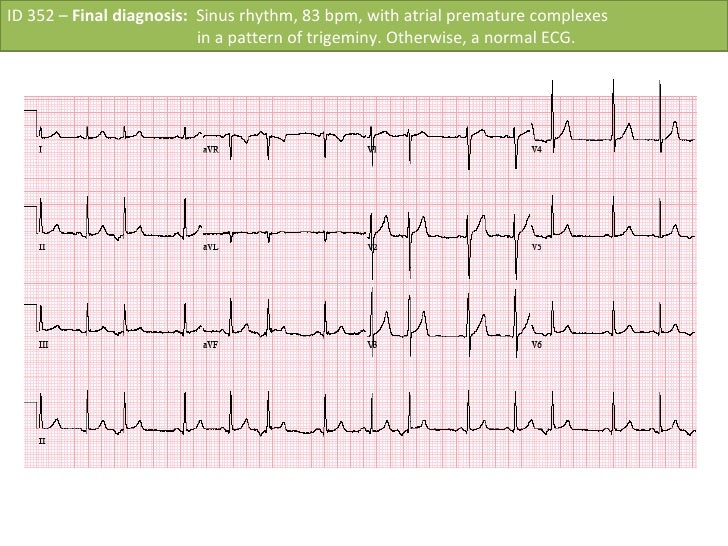



Id 352 Sinus Rhythm With Premature Atrial Complex
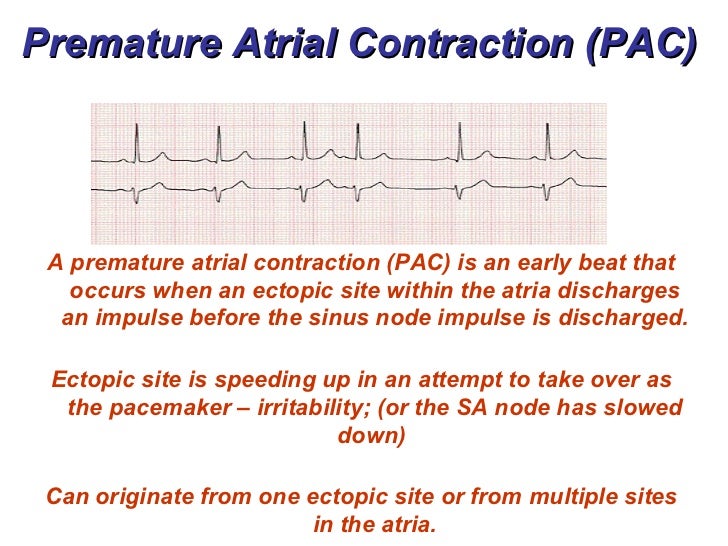



Atrial Rhythms Bmh Tele




Premature Atrial Complex Induced Cardiomyopathy Case Report And Literature Review Heartrhythm Case Reports




Electrocardiogram Shows Sinus Rhythm With Premature Atrial Contractions Download Scientific Diagram




Pac Pjc Pvc Cardiac Electrophysiology Cardiac Arrhythmia




Cardiac Dysrhythmias Premature Atrial Contraction Pacs Flashcards Quizlet




Sinus And Atrial
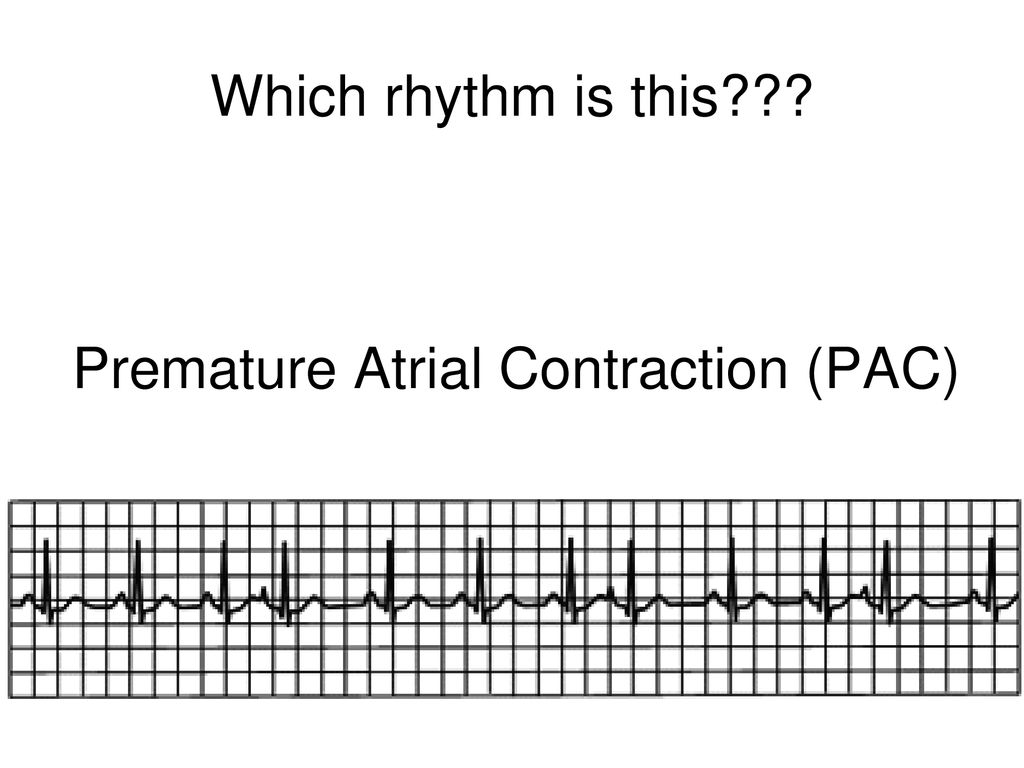



Review Of Ecgs Ppt Download



Premature Atrial Contraction Latest Avandia Settlement News June 14 11 痞客邦



Ekg Strip Search Premature Atrial Contraction Pac




Solved What Is The Correct Analysis Of This Rhythm اسرار Chegg Com



1




Pin On Nursing
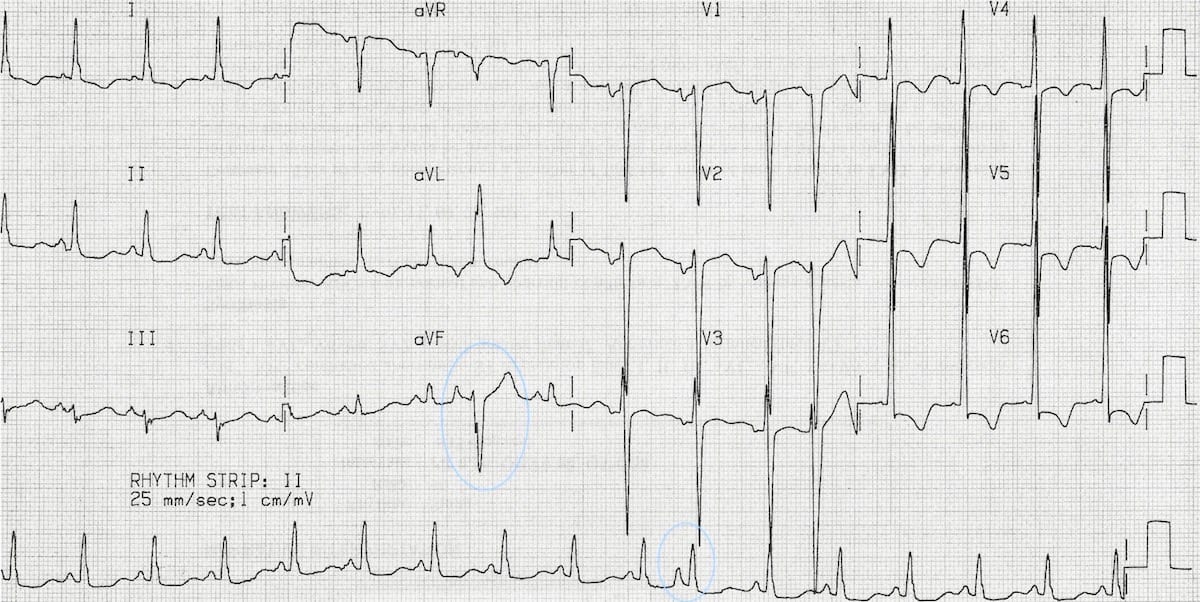



Premature Atrial Complex Pac Litfl Ecg Library Diagnosis



Premature Atrial Contractions




Premature Atrial Contraction An Overview Sciencedirect Topics



1




Pin On Nurse Life
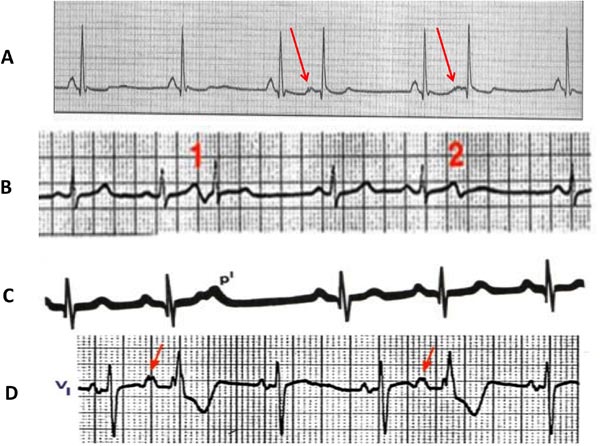



Neonatal Rhythm And Dysrhythmias Thoracic Key




Premature Atrial Complexes A Premature And Unrecognized P Wave Occurs Download Scientific Diagram




Focus On Diagnosis American Academy Of Pediatrics



Prior To Pacemaker Implantation The Patient S Baseline Download Scientific Diagram



1




Image Sinus Rhythm With Atrial Premature Beats Arrows Msd Manual Professional Edition




Premature Atrial Contraction Definition Causes Symptoms Diagnosis Treatment




Difference Between Premature Atrial Contraction And Atrial Fibrillation Biology Stack Exchange




12 Lead Ecg Arrythmias Proprofs Quiz




Ectopic Supraventricular Rhythms Cardiovascular Disorders Merck Manuals Professional Edition




Pac And Nonconducted Pac



Ecg Of The Month A 44 Year Old Woman With History Of Htn And Nonischemic Cardiomyopathy Presents To Ed American College Of Cardiology



Premature Atrial Complex




Premature Atrial Contractions Article
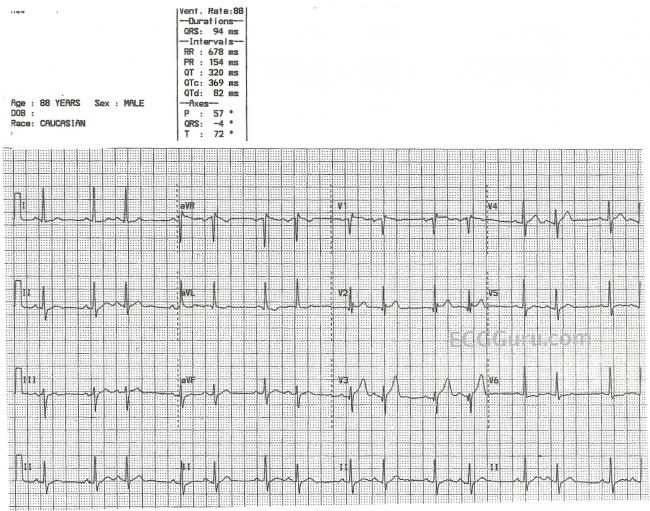



Premature Atrial Contraction Ecg Guru Instructor Resources




Premature Atrial Contractions Are They Benign Or Malignant The Skeptical Cardiologist




Pdf Reconstruction Of Premature Atrial Contraction And Premature Ventricular Contraction On Ecg Traces By Applying Pla As Segmentation Process Semantic Scholar




Electrocardiogram Premature Atrial Contractions Download Scientific Diagram
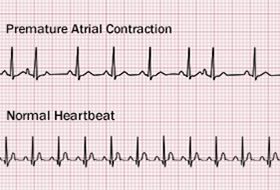



Premature Atrial Contractions Causes Symptoms Diagnosis Treatment




Knowledge Of Ecg N W We Started The Cardiac Dysrhythmias With Ekg Tracings And Methods Of Treatment Management Normal Sinus Rhythm This Is A Normal Heart Rhythm So No Treatment



Search Q Sinus Rhythm With Pvc Tbm Isch




Atrial Premature Contractions Ecg Jobs Ecityworks
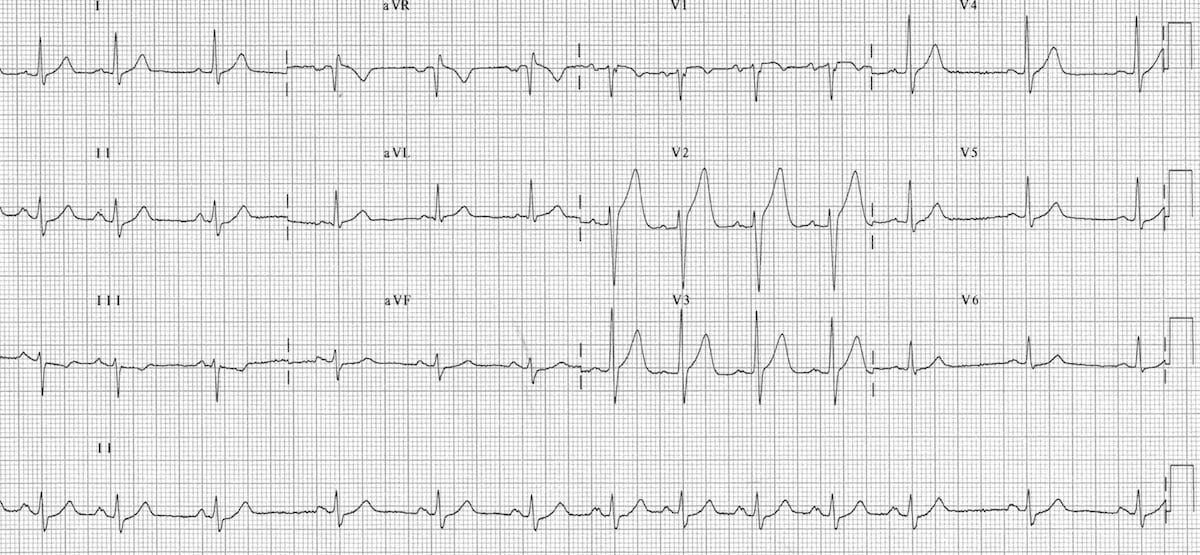



Sinus Arrhythmia Litfl Medical Blog Ecg Library Basics




Http Www Youtube Comwatch V7 Twu 0gklzofeaturerelated Ecg
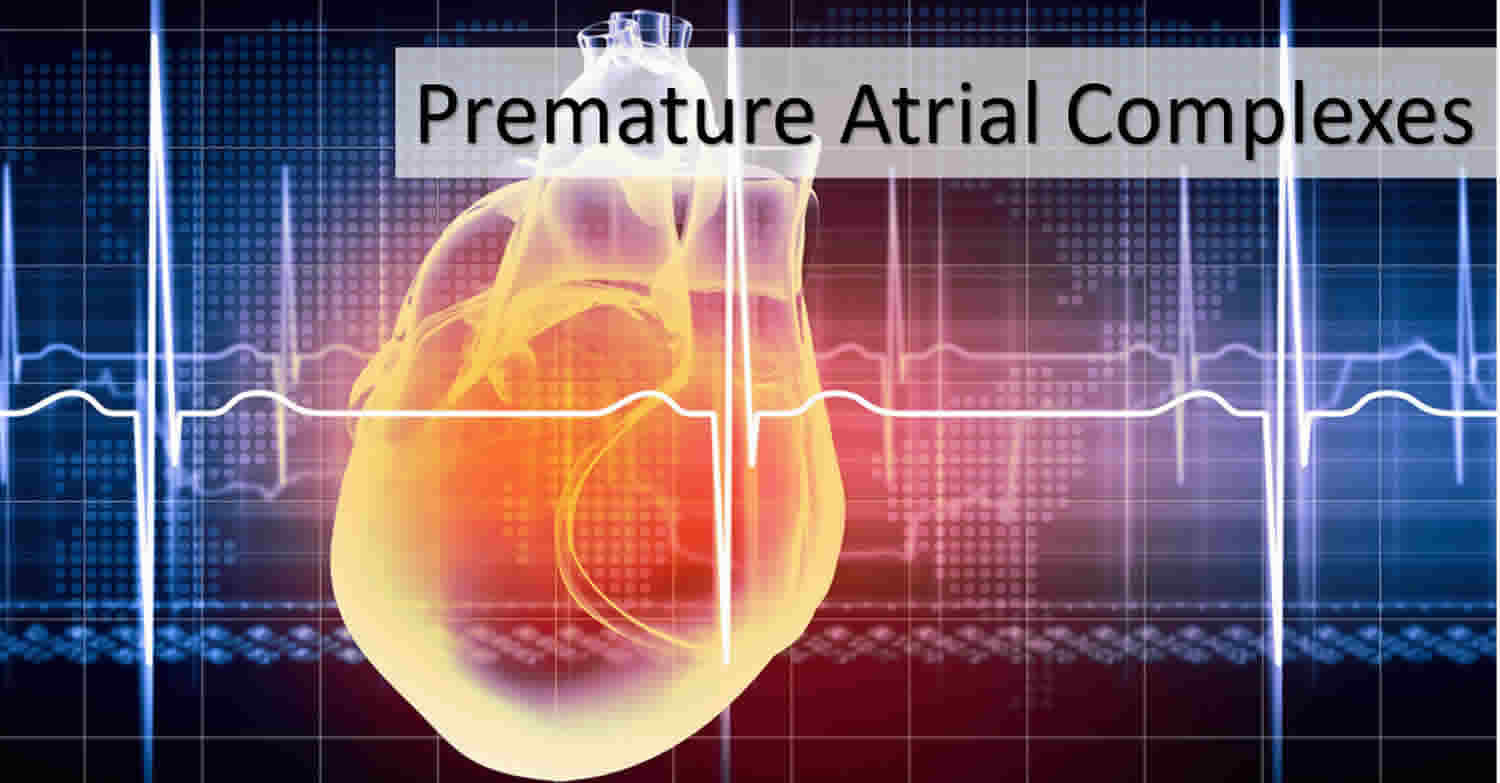



Premature Atrial Contraction Definition Causes Symptoms Diagnosis Treatment




Atrial Arrhythmias Thoracic Key




Atrial Rhythms Bmh Tele




Premature Atrial Contraction Electrocardiogram Wikidoc




Premature Atrial Contraction Electrocardiogram Wikidoc




Premature Atrial Contraction Electrocardiogram Wikidoc
/premature-atrial-complexes-pacs-1746248-6f0cff8230b24003aa23f8bd582b4ef7.png)



Premature Atrial Complexes Pacs Causes And Treatment



Ekg Strip Search Premature Atrial Contraction Pac




Premature Atrial Contraction Electrocardiogram Wikidoc
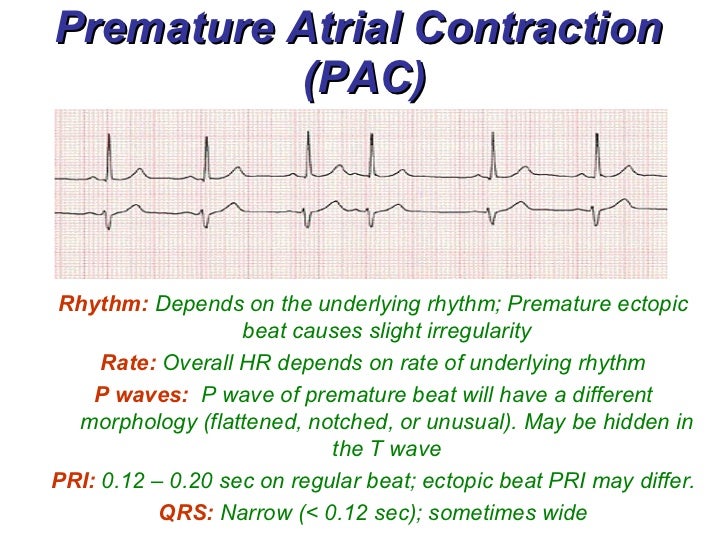



Atrial Rhythms Bmh Tele




Ecg Educator Blog Premature Atrial Contraction Pac




Premature Atrial Contractions Are They Benign Or Malignant The Skeptical Cardiologist




Ectopic Beats Palpitations The Student Physiologist




An Arrhythmia Is A Disruption In The Normal Events Of The Cardiac Cycle Ppt Download




Slides Show



Premature Ventricular Contraction Wikipedia




Anaesthesia Uk Supraventricular Arrhythmias




Bigeminy Wikipedia




Pacs Heart Squad




Premature Atrial Contraction Pac The Premier Ekg Resource For Medical Professionals Ekg Md Dr Anthony Kashou




Are Premature Atrial Contractions Serious Oklahoma Heart Hospital
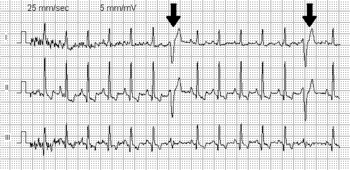



Premature Ventricular Contraction Wikipedia




Premature Atrial Contractions Are They Benign Or Malignant The Skeptical Cardiologist




Premature Atrial Complex Pac Litfl Ecg Library Diagnosis




Arrhythmia Types Advanced Heart Care New Jersey Valley Health System




Figure 3 From Ecg Diagnosis Type I Atrial Flutter Semantic Scholar




Ecg Premature Atrial Complex Youtube
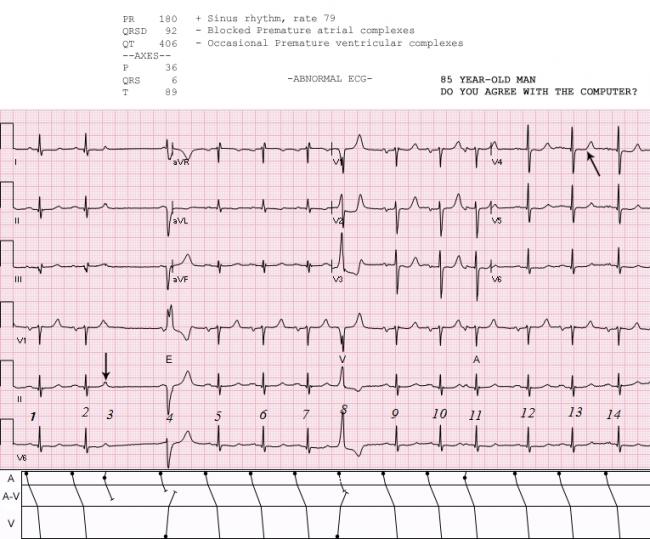



Non Conducted Premature Atrial Contractions Ecg Guru Instructor Resources




A Sinus Rhythm And Premature Atrial Contractions Pacs On Standard Download Scientific Diagram




Pacs Heart Squad




Premature Atrial Complex Pac Litfl Ecg Library Diagnosis
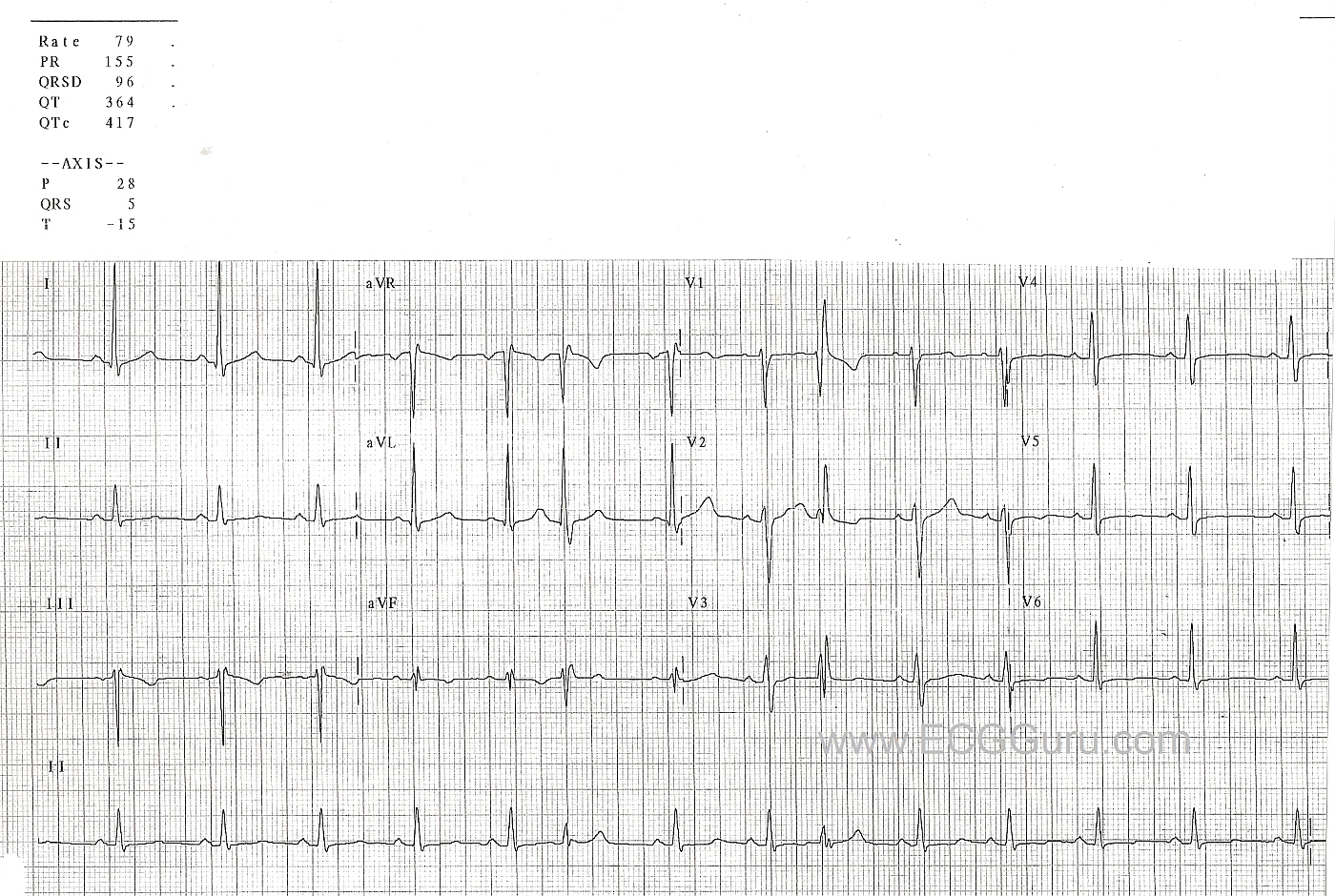



Normal Sinus Rhythm With Aberrantly Conducted Pacs Ecg Guru Instructor Resources
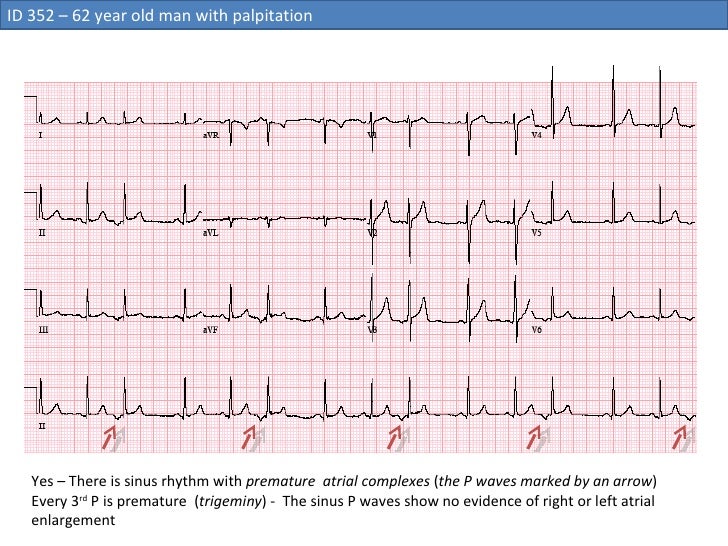



Id 352 Sinus Rhythm With Premature Atrial Complex




Ectopic Atrial Rhythms Ecg Review Criteria And Examples Learntheheart Com


コメント
コメントを投稿